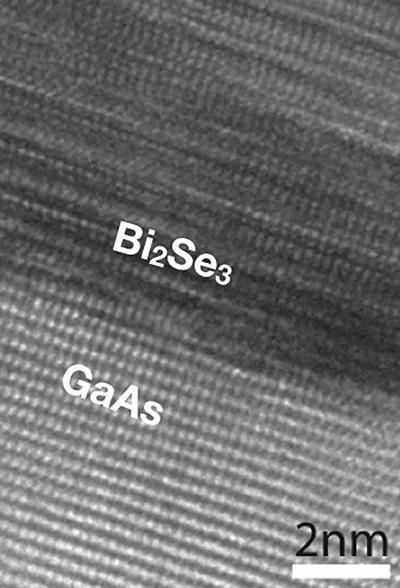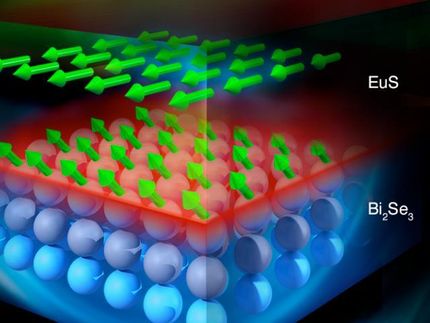The birth of topological spintronics
The discovery of a new material combination that could lead to a more efficient approach to computer memory and logic will be described in the journal Nature on July 24, 2014. The research, led by Penn State University and Cornell University physicists, studies "spin torque" in devices that combine a standard magnetic material with a novel material known as a "topological insulator." The team's results show that such a scheme can be 10 times more efficient for controlling magnetic memory or logic than any other combination of materials measured to date.

The atomic layers of the topological insulator bismuth selenide are visible in this high-resolution electron microscope image.
Samarth lab, Penn State University
"This is a really exciting development for the field because it is the first promising indication that we actually may be able to build a practical technology with these topological insulator materials, which many condensed-matter physicists have been studying with spintronics applications as the motivation," said co-principal-investigator Nitin Samarth, a professor of physics and the George A. and Margaret M. Downsbrough Department Head of Physics at Penn State. "Our experiment takes advantage of the very special surface of bismuth selenide - a material that is a topological insulator - which inherently supports the flow of electrons with an oriented spin," he said. "Our collaborators at Cornell found that, at normal room temperatures, we can use these spin-oriented electrons to very efficiently control the direction of the magnetic polarity in the adjacent material."
Professor Dan Ralph, the co-principal-investigator at Cornell University, said "Our team's research has overcome one of the key challenges to developing a spintronics technology based on spin-orbit coupling - the efficiency with which an ordinary charge current can be converted into a spin current." The experiment used thin-film materials that were synthesized in Samarth's molecular-beam-epitaxy facility at Penn State by Graduate Student Joon Sue Lee and Research Associate Anthony Richardella. Graduate Student Alex Mellnik, in Ralph's laboratory at Cornell, fashioned these thin films into devices and carried out the spin-torque measurements. Professor Eun-ah Kim and her group at Cornell developed the theoretical interpretation of the experiments.
Most read news
Topics
Organizations
Other news from the department science

Get the chemical industry in your inbox
From now on, don't miss a thing: Our newsletter for the chemical industry, analytics, lab technology and process engineering brings you up to date every Tuesday and Thursday. The latest industry news, product highlights and innovations - compact and easy to understand in your inbox. Researched by us so you don't have to.





























































